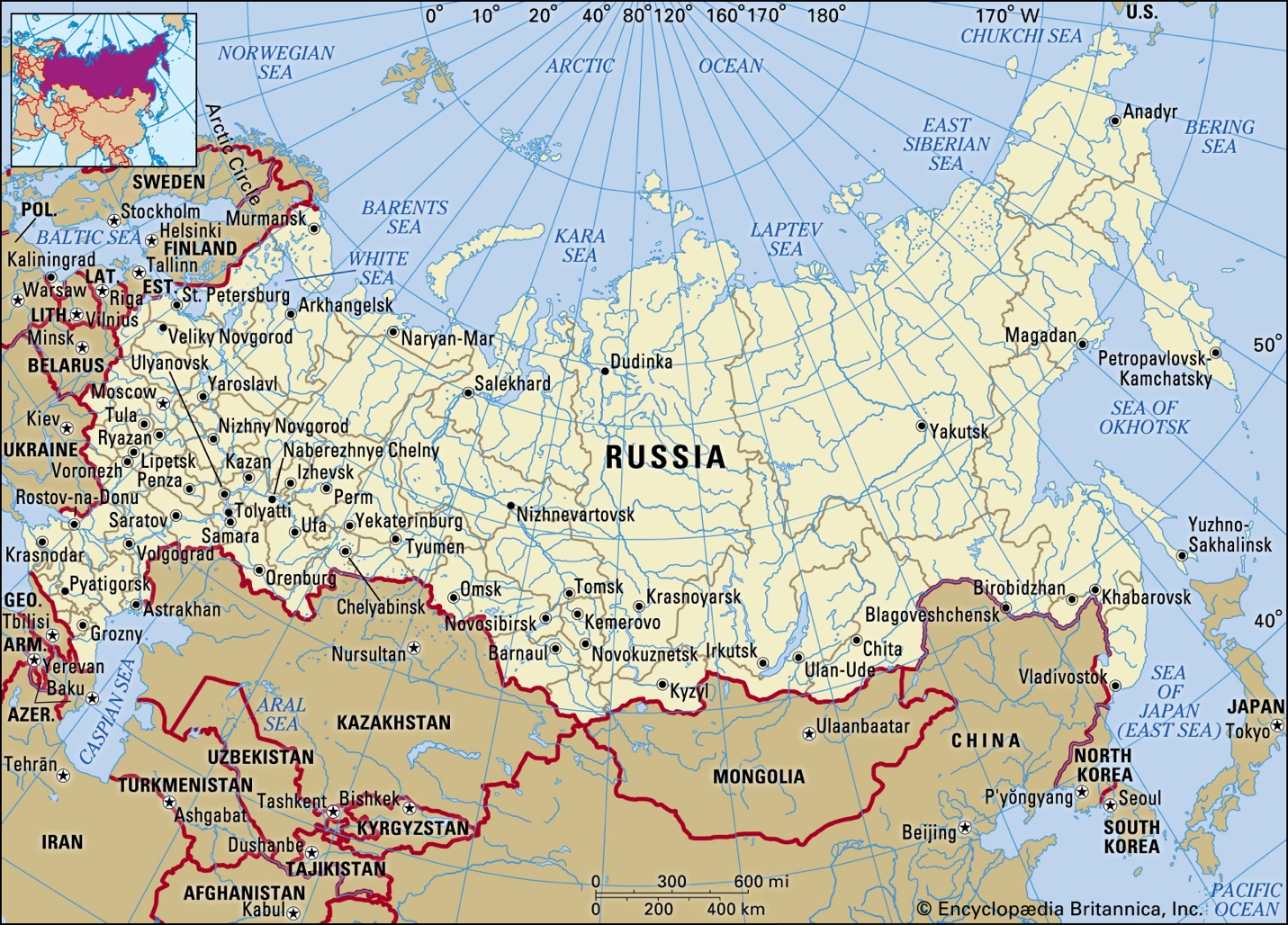Introduction
The Russian Federation, condensed as Russia, is the largest state in the world whose political system is based on democratic federative principles with a republican form of government. Geographically, Russia is located in the northeast of Eurasia, but it also occupies the territory of North Asia, as shown in Figure 1 (Hosking, 2020). The size of this country is so large that if one compares it to the United States or Canada, one will find that the size of the European state is on average twice as large. Among others, the state has the deepest lake in the world, Lake Baikal, and the longest European river, the Volga. Meantime, the country is divided into 11 time zones, which determines the abundance of national climatic and ethnic environments.

The large size of the country has traditionally determined the trade industry of the state. A large number of water bodies stretching over extended areas have historically been used as trade routes both for domestic trade and for the export and import of raw materials. At the same time, large territories laid the foundation for the diversity of natural resources mined in Russia: oil, natural gas, coal, metals, and precious stones. Along with these resources, the state has extensive reserves of forest, water, and territories. In sum, such natural conditions predetermined Russia’s participation in the world trade arena as an active supplier.
Although the Russian government has primarily focused on international trade invaluable natural resources, it does not forget to encourage domestic business, agriculture, and science, and education. Most of the world-famous universities — such as MSU and HSE — are located in the capital city, Moscow (“Top universities in Russia,” 2020). However, other major cities can also offer international quality education to applicants: such centers are located in St. Petersburg, Kazan, Vladivostok, Yekaterinburg, and Novosibirsk. Historically, much earlier than education, agriculture appeared in this country: the first settlers of Russia, or as it used to be called Rus’, cultivated grain crops, corn, sunflower. Forest berries, and especially cranberries, became popular products closer to the northern part of the country. Livestock farming in Russia differs little from other countries globally since the main areas are growing dairy cows, pig breeding, fish farms, and chicken production. Agriculture is not the main export or import point of the country. On the contrary, Russia sells many oil, gas, metals, and chemical products to European countries. At the same time, a large number of electronic devices, cars, rubber, and exotic local flora are supplied to the Federation.
Even at the dawn of its appearance, Russia was one of the first European countries to teach literacy to citizens. It is interesting to note that even ordinary citizens had writing skills, as evidenced by numerous ancient finds of Birchbark manuscript, localized on the territory of ancient Novgorod (north-western region). The ancient Russian language was modified with time into modern Russian based on the Cyrillic alphabet: the same alphabet is used in Belarus, Bulgaria, Macedonia, Serbia, and Montenegro (Sheth, 2018). However, it should be admitted that globalization, also implemented through the Internet, has led to the borrowing of many English words.
Large territories determine the ethnic and cultural differentiation of the country. More than one hundred different nationalities live in Russia, and all world religions are practiced: Orthodoxy (Christianity), Islam, and Buddhism. Although it is fair to admit that Orthodoxy has historically been a more strengthened direction, so many national holidays are associated with religion: Easter (the resurrection of Jesus) and Christmas (I/07). Non-religious holidays include Victory Day (V/09), New Year’s Eve (XII/31), Defender of the Fatherland Day (II/23), and International Women’s Day (III/08). On these holidays, Russians cook traditional dishes, namely Olivier salad, Blini (like pancakes), Pelmeni (like dumplings), beet coated herring, and borscht.
References
Hosking, G. A. (2020). Russia. Britannica. Web.
Sheth, K. (2018). Languages that use the Cyrillic alphabet. World Atlas. Web.
Top universities in Russia. (2020). UNIRANK. Web.